One of the most challenging things about owning chickens is simply restraining yourself from getting more. Even for keepers who have the most utilitarian purposes for their birds, chickens just have a way of getting a hold of you.
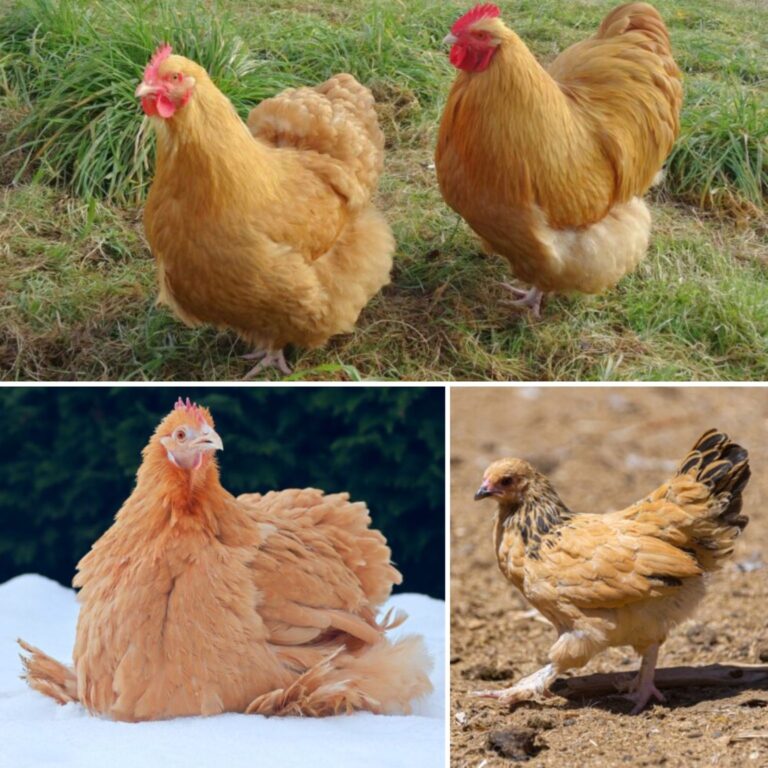
Pretty soon you find yourself buying birds on a whim or for reasons that you never would have anticipated.
Let’s take plumage, for instance. If you are anything like me and I know you are, chances are you’ve gotten so smitten with birds of a certain color before that you go on a buying frenzy.
Before you know it you have an entirely new flock on your property. Speaking of colors, some of the most popular chickens today are yellow.
If you’ve got a mind to find a fancy yellow bird to add to your growing family, I’ve got 13 breeds that are sure to scratch the itch.
Table of Contents
Yellow? Or Buff?
Really quick, to clarify for folks who are new to chickens generally, you might be confused by some of the terms you see referring to the color of a chicken’s plumage…
Specifically, the color that you, I, and pretty much everyone else call yellow is referred to as buff when referring to chickens.
No, it doesn’t mean that a chicken is particularly muscular and it isn’t referring to polishing or nakedness, either. “Buff” just means yellow or blonde feathers!
So whenever you see that referenced in a chicken’s name, now you will know!
1. Easter Egger
A clue to the special characteristic of the Easter Egger is in the name: these chickens lay a variety of colored eggs, typically speckled shades of blue.
You might say they look like Easter eggs, and that’s how they got the name in the first place!
Easter Eggers are available in a variety of buff plumage variations, but it is important to point out that the Easter Egger is not really a true breed of domestic chicken.
They are hybrids, of a sort, or more accurately any crossbreed that features a mix of chickens to produce a bird that will lay these colored eggs.
Purists might turn up their nose at these birds, especially because they aren’t the most handsome buff chicken on our list, but they are great layers that can crank out nearly 300 eggs a year! Very impressive!
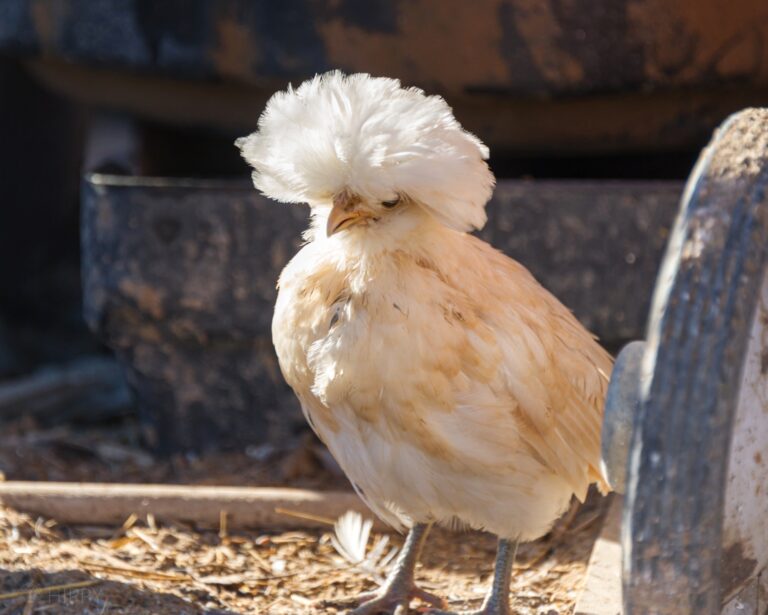
2. Polish
Polish chickens are another instantly recognizable small breed, and one that’s famous for its dignity and lovely appearance.
Although they are small, these fine-bodied chickens that stand very upright and have a tuft, or crown, of fluffy feathers on their heads not unlike that of Silkies. They’re also notable for their dark blue or steel-colored legs.
Unlike the Silkie, the Polish is not a purely decorative showbird; they are surprisingly productive egg layers, and although they’re highly variable when it comes to production depending on their lineage, they will as a rule lay upwards of 200 medium-sized eggs per year.
Even better, they are dependably one of the least broody domestic breeds.
But, let’s talk about those beautiful buff feathers! Among the Polish breed, they are available in buff-laced, which is buff feathers that are bordered by white tips, giving them a distinctly modeled or scaled appearance that is truly gorgeous.
For looks alone, I think the buff-laced polish cannot be beaten!
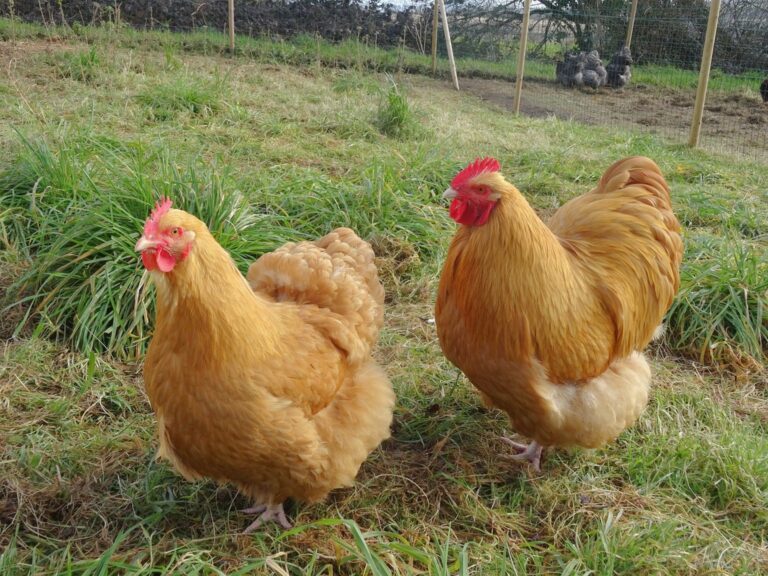
3. Orpington
One of the most remarkable and beloved chicken breeds around, the Orpington is rightly known for its extremely docile and friendly behavior.
They’re also known for cranking out a high volume of medium to large eggs, with good hens producing around 280 a year.
Orpingtons are also known to be exceptional mothers, meaning they go broody readily and intensively.
They are so broody, in fact, that there are routinely used as surrogate mothers for other eggs that need to be hatched, and their size means they are even capable of hatching duck and goose eggs.
The buff Orpington is probably the most popular and iconic of the breed, and makes regular appearances at poultry shows and in flocks around the world. No matter what your purposes, you won’t go wrong with an Orpington.
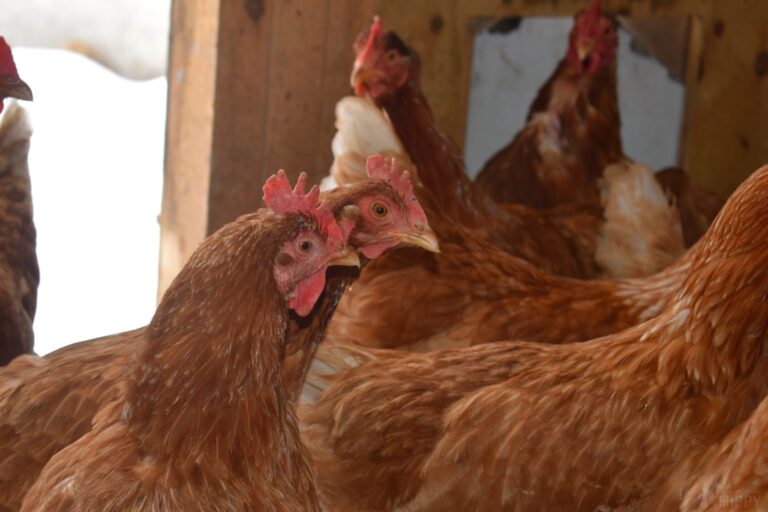
4. Golden Comet
The Golden Comet is a special instance on our list, and isn’t so much a breed unto itself as it is the resulting bird from a number of different pairings among various other breeds.
Typically created by breeding a Rhode Island Red and a White Leghorn, other potential parents to the Golden Comet include the New Hampshire Red and the Plymouth Rock.
In any case, this hybrid bird is a spectacularly good layer producing more than 320 large eggs every single year, and all of these chickens have a remarkably even brown-tinted buff color that gives them their name.
If you want a supreme layer, a striking bird and an interesting example of genetics and breeding, the Golden Comet is a surefire winner.
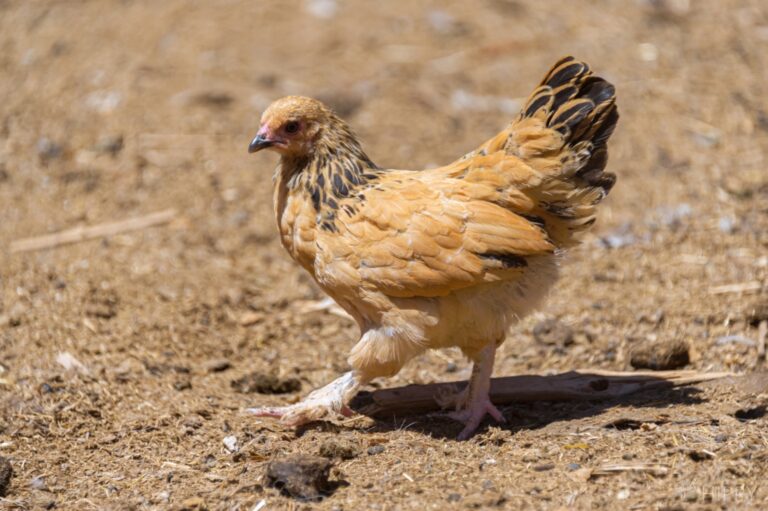
5. Brahma
Brahmas are large, upright and impressive chickens, and the buff variety is especially striking thanks to the contrasting colors of its hackle and tail feathers.
Typically kept for meat production because of their size, they’re also surprisingly capable layers, producing anywhere from 175 to 200 large, brown eggs each and every year.
Although hardly spectacular for commercial production, this is more than enough for most homesteaders, and also notably Brahmas tend to be excellent winter layers if you want to stay in eggs year-round.
Also somewhat surprisingly, despite their size they tend to be gentle, even-tempered birds and have a reputation as being peacemakers in mixed flocks.
That being said, you need to be cautious if you have smaller troublemakers that just won’t quit, because the size and strength of a Brahma can be telling in a fight, so keep an eye on it.
6. Hungarian Yellow
A truly unique exotic breed, and barely known in most places, the Hungarian Yellow has a remarkable, golden color that’s incredibly appealing.
Between that and the rarity of these birds you should expect to shell out a pretty penny for the privilege of owning one.
These chickens are known to be good foragers and independent, but they suffer from health problems including being prone to seizures and they have remarkably low hatching rates.
The only reason they haven’t gone extinct is because of the dedicated efforts of scientists in the field of avian science.
Nonetheless, if you are a true chicken connoisseur and want to do your part to help preserve a breed for future generations, the Hungarian yellow might be a good choice for you.
7. Plymouth Rock
Plymouth Rocks are among the most beautiful chickens out there, possessing an ideal combination of size, posture, proportion, and pattern on their plumage.
The buff variation of the Plymouth Rock, colloquially called the “Buff Rock” for short, are especially notable because they have a solidly colored breast and back compared to the barred appearance of the standard Plymouth Rock.
These chickens are hardy, known to do well in scorching heat and cold alike, and are a good dual-use breed for any homestead.
They’re commonly raised for meat and also reliably produce around 200 eggs every year, though quite a few hens are less prolific.
Something else to keep in mind is that Plymouth Rocks have a reputation for being broody, so that’s something you will have to manage if you want to make use of them for eggs regularly.
But aside from their broodiness, this’s another chicken that is beloved for its good attitude and friendliness towards people. Don’t be surprised if they come running whenever they see you!
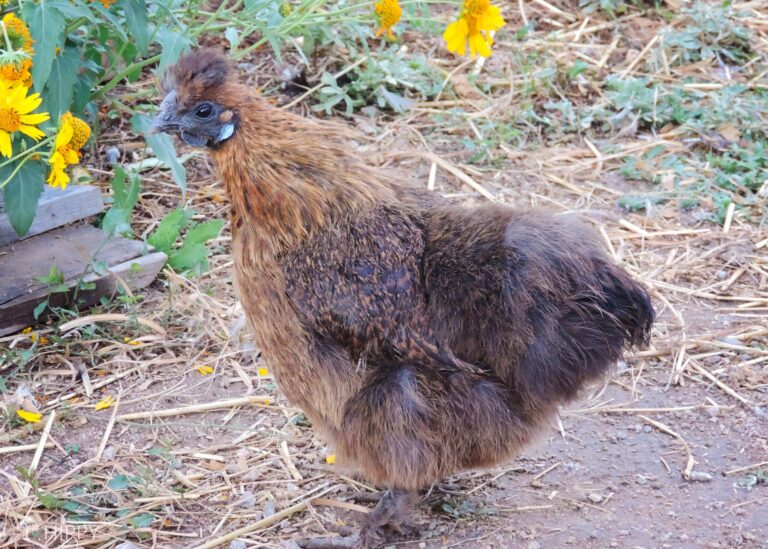
8. Silkie
One of the most iconic and instantly recognizable domestic breeds out there, the Silkie is tiny and, as the name suggests, extremely fluffy with feathers that are more like hair than the close, tight and water-repellent feathers we’re used to seeing on chickens.
And even prettier is the buff Silkie, covered from tip to tail in a flowing coat of wonderful blonde feathers. The color of the buff silky is so magnificent, they almost appear to glow when they are in the sunlight!
But the Silkie is really just a showbird or a pet: it’s very small, and so doesn’t make for a good meat chicken and it’s only a so-so layer that produces very small eggs. But if you are a chicken fancier, the Silkie is very hard to beat!
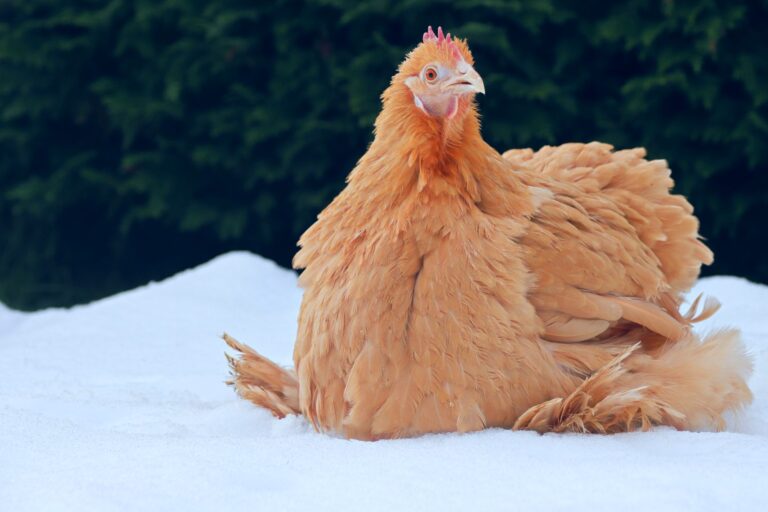
9. Cochin
Cochins are large, puffy chickens noteworthy for their heavily feathered legs and large, multi-pointed combs.
Hailing from Asia, they are dependably good egg layers but predominantly used as a meat bird, making them capable dual-use chickens.
Also notably, they tend to have really loving attitudes, getting along well with other chickens and with people. This has earned them a sterling reputation as a fancy show bird and a wonderful pet or companion chicken.
And because it’s on this list, you know that Cochins can be had in a lovely blonde buff variation that contrasts quite strikingly with their red wattles and combs.
These make a great addition to most flocks, but do take care if you live in a wet or muddy place because those heavily feathered legs are a nightmare to keep clean and vulnerable to pest infestation.
10. Black-tailed Japanese
A very old Heritage breed, the small Black-tailed Japanese chicken has a really unique appearance, consisting of shaggy, upturned feathers.
These give this chicken an appearance of always looking like it just got out of a fight, or maybe like it didn’t take the time to comb in the morning!
Jokes aside, these birds are instantly recognizable from the individual, upright black feathers that protrude from their tails.
In the case of the buff variation of the Black-tail Japanese they are solid buff from beak all the way back to the base of their tail feathers; only those aforementioned major tail feathers are black, and sometimes they’ll have a blonde one or two mixed in.
Today they are a popular show breed, and also decent layers of small white eggs, usually churning out anywhere from 180 to 220 per year.
These chickens are also known for being docile and easy to handle, so if you want an exotic chicken that won’t put you through the wringer, they make a fine choice.
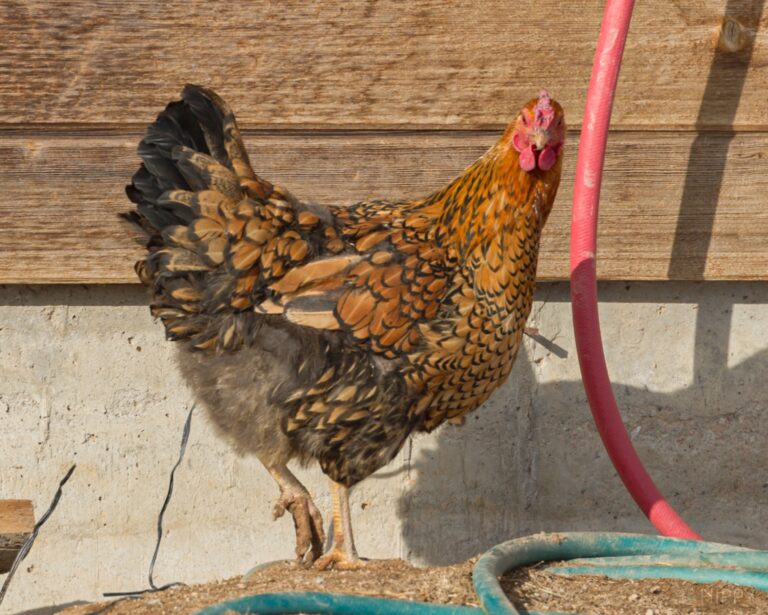
11. Wyandotte
Available in a buff-laced variety, one typically bordered by entire sections of white feathers the Wyandotte is a huge chicken that can close in on 10 pounds.
This naturally makes them a superb table bird and they’re also surprisingly good egg layers in addition, with most healthy hens in their prime laying anywhere from 180 to 200 eggs annually.
Wyandottes are also popular on show circuits, and chicken-lovers who want more chicken to love enjoy the company of these curious, active big birds.
They have a reputation for being friendly and affable, however, they get significantly more aggressive on the attack when they feel threatened or defensive.
This can lead to a situation spiraling out of control in a mixed flock, if you have other animals around or if you have a particularly aggressive rooster.
But assuming you can manage that quirk, the Wyandotte is a beautiful, inspired and still utilitarian choice.
12. Leghorn
Leghorns are large, stout impressive chickens that have a reputation for being independent and excellent foragers, making them one of the premier choices for free-ranging chickens.
They are also amazingly good egg layers, with many hens laying six eggs every week like clockwork. The buff variety of the Leghorn is particularly handsome.
However, despite being hardy and generally independent, Leghorns are particularly vulnerable to extreme cold because of their large combs and wattles which are vulnerable to frostbite.
So long as you can protect your chickens from cold, or live in a place with relatively mild winter weather, it isn’t a significant problem.
And although Leghorns aren’t the biggest domestic chickens around, they still make for a fine table bird because of the quality of their meat, with many hens clearing 5 pounds, and roosters reaching an average of 7 1/4 pounds.
13. Lemon Pyle Brahma
The Lemon Pyle Brahma is a subspecies, or specialty breed, of the standard Brahma and looks even bigger than the typical one we are all familiar with.
That’s mostly because their feathers are denser, fluffier, and on some parts of their body scruffier, making these chickens look particularly broad and stocky.
And in actuality, the Lemon Pyle Brahma does typically grow a little bit bigger than the standard one, with some roosters maxing out at an astonishing 12 pounds.
And, like the name suggests, they have a creamy tan color that gives them their lemon moniker.
As you might expect they make wonderful birds for meat, and are also accomplished layers, cranking out around 200 extra large eggs every year.
But they’ve got some problems, namely the fact that they don’t do very well in high temperatures and the fact that they are so huge they often have a hard time maneuvering around their own eggs and will typically break them while in the nest.
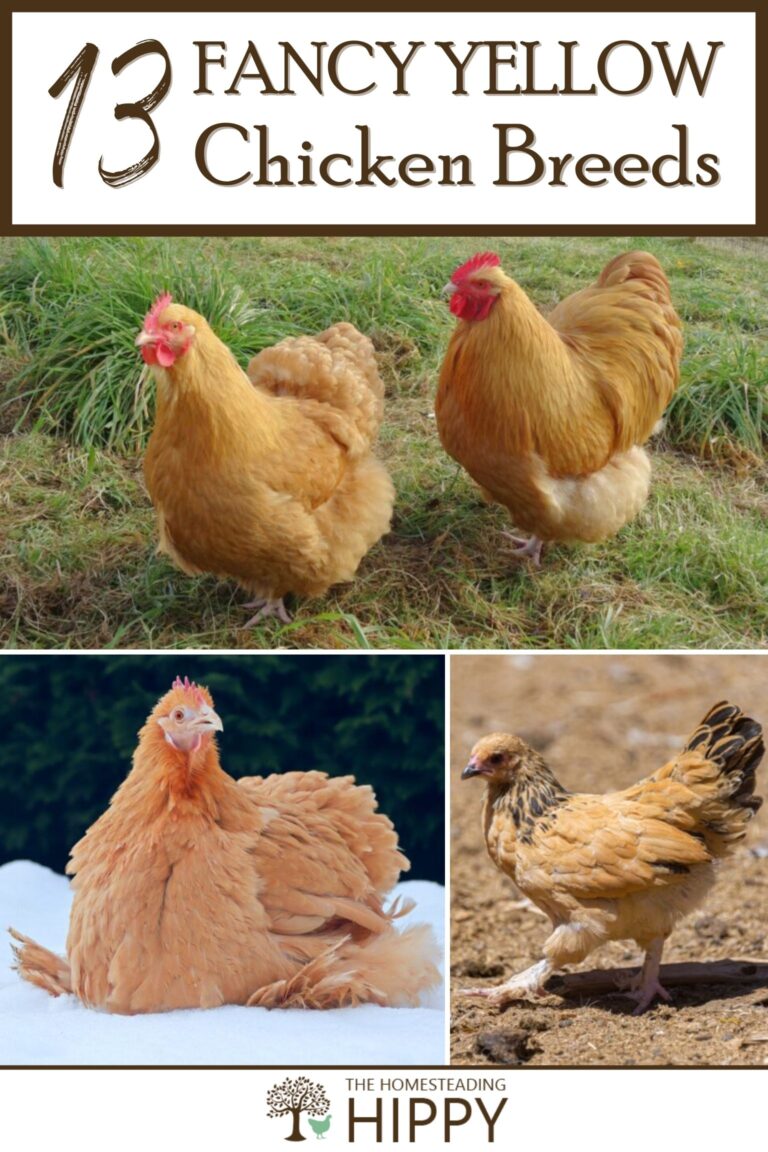
Tom has built and remodeled homes, generated his own electricity, grown his own food and more, all in quest of remaining as independent of society as possible. Now he shares his experiences and hard-earned lessons with readers around the country.
Find out more about the team here.
